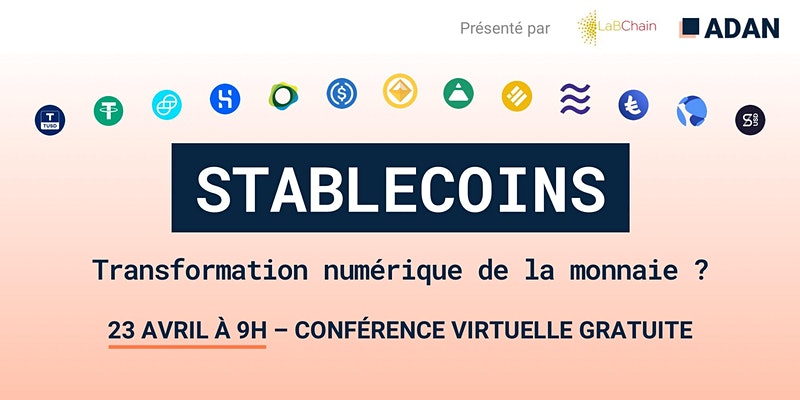Research
Stablecoins: The digital transformation of money?
Are national currencies being challenged by decentralised or private currencies?

Date and location: online April 23 at 9 a.m. CET
In recent years, we have seen the emergence of a new class of cryptoassets that defies the price volatility often associated with crypto-currencies: stablecoins. Some have identified issuers (centralized control model), others are issued by DAOs (autonomous and decentralized organizations), but all have in common that they provide a fixed price against a currency, most often the USD.
Today, stablecoins represent nearly US$70 billion in crypto market capitalisation and an unprecedented ground for innovation in monetary policy, market efficiency and decentralised governance. They are used not only by investors seeking to hedge against the volatility of crypto markets, but also by savers seeking to escape inflation in some countries of the world. They are also used as a means of settlement to use so-called “on-chain” services.
In Europe, stablecoins backed by the euro are slowly developing. The Lugh project – a collaboration between Casino, Coinhouse, Nomadic Labs (Tezos), PwC and Sceme – offers a euro stablecoin that is fully collateralised by funds held in a bank account managed by Société Générale.
The value of a low-volatility cryptoasset is understood far beyond the crypto ecosystem. Facebook’s Diem (previously Libra) aims to create a “cryptocurrency” backed by a basket of currencies, and many central banks – including the ECB – are considering the possibility of creating digital representations of their currencies (MNBC). Indeed, China recently announced the digital yuan, which is fully controlled by the Chinese central bank. However, whether we are talking about Diem or MNBCs, we are far from the decentralised stablecoins that exist in decentralised finance (DeFi).
The Adan-LaBChain stablecoin conference will address these many issues and reveal the major challenges facing the French and European industry today.